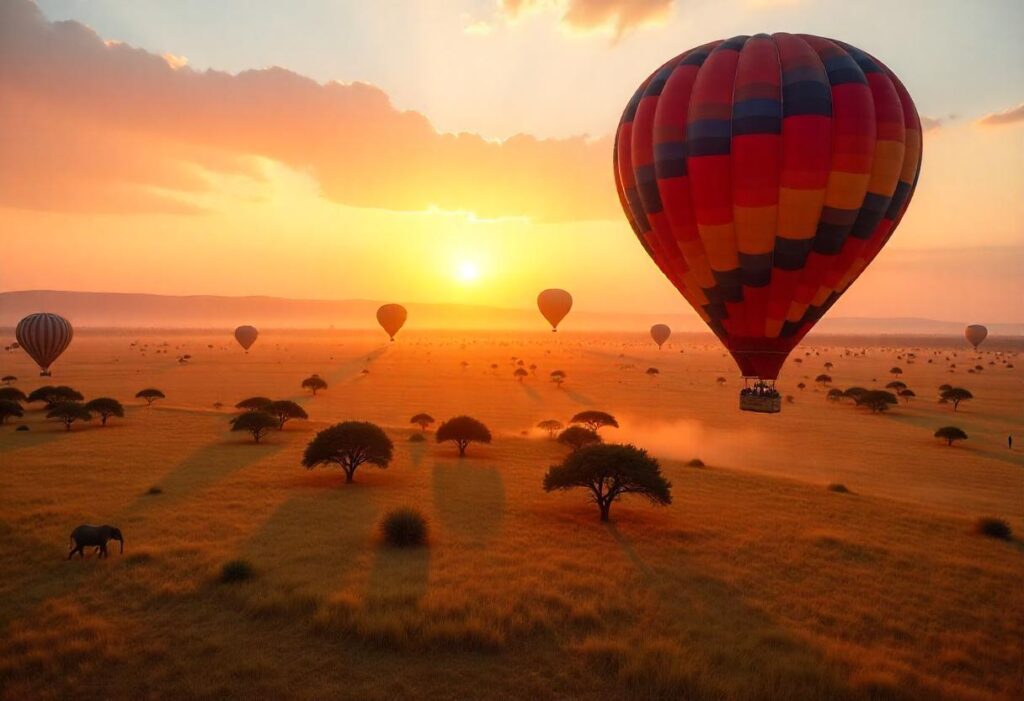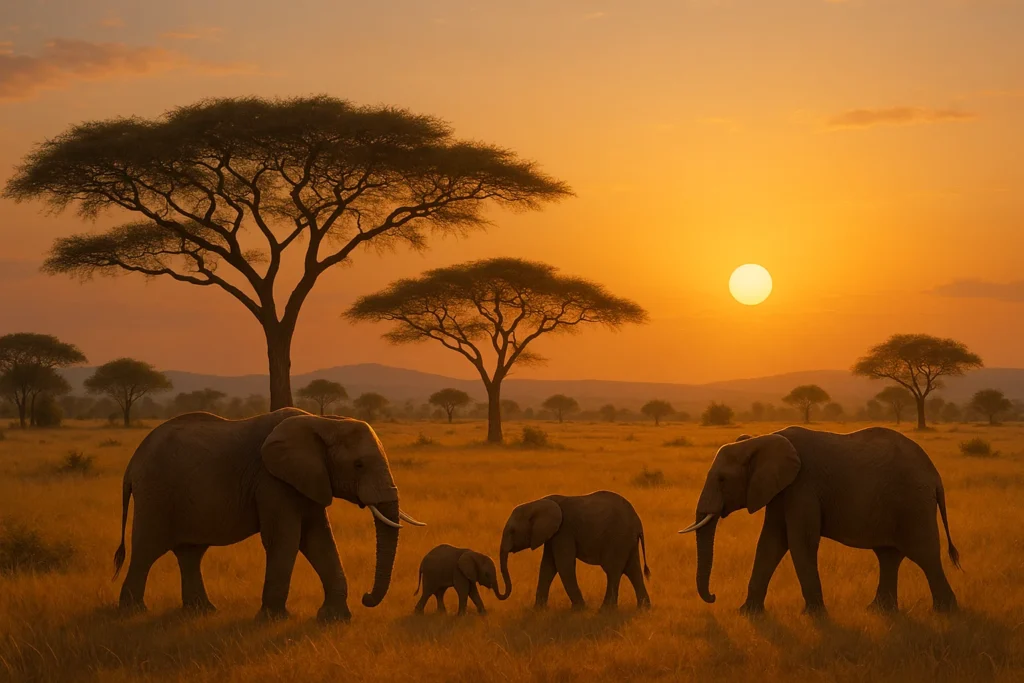Few experiences compare to drifting silently over Africa’s golden plains as the sun rises. A hot air balloon safaris is a once-in-a-lifetime adventure, offering an unmatched perspective of the wild. From breathtaking views to exclusive wildlife sightings, here’s everything you need to know about this unique safari experience.
What is a hot air balloon safari?
A hot air balloon safari involves floating above the savannah in a large, open-air basket suspended below a balloon, usually at sunrise. This experience provides a bird’s-eye view of the landscape and wildlife below, often in areas that are difficult to access by vehicle.
Why choose a balloon safari?
A unique vantage point
From the air, you can observe the landscape in its full scale: winding rivers, scattered acacia trees, herds of elephants on the move, and predators stalking prey—scenes that are easy to miss on ground level.
A peaceful, silent experience
Without the rumble of engines, ballooning offers a serene and almost surreal encounter with nature. The only sounds you’ll hear are the occasional blasts from the burner and the calls of wildlife below.
Where can you do hot air balloon safaris?
Masai Mara, Kenya
The Masai Mara is one of the most iconic places to experience ballooning, especially during the Great Migration (July–October). Flights typically launch from the Mara Triangle and float over the Mara River and open plains.
Serengeti National Park, Tanzania
Balloon safaris in the Serengeti are a highlight year-round but are particularly popular during the migration calving season in the south (Jan–Mar) or river crossings in the north (July–Sept).
Other destinations
- Tarangire National Park, Tanzania – known for large elephant herds
- Sossusvlei, Namibia – fly over red sand dunes and surreal desert landscapes
- Okavango Delta, Botswana – limited but spectacular options depending on water levels
What to expect on the day
Early morning start
Balloon safaris begin before sunrise. You’ll be picked up from your lodge around 4:30–5:00 AM and driven to the launch site in the dark.
Pre-flight briefing and launch
After a safety briefing and watching the balloon inflate, you’ll climb into the basket and lift off as the first light illuminates the horizon.
One-hour flight
The flight typically lasts around 60 minutes, depending on weather and wind conditions. Expect low-level gliding and occasional climbs for panoramic views.
Champagne breakfast
Most balloon experiences end with a full bush breakfast and champagne served in the wild—an unforgettable finale to an incredible morning.
Is it worth it?
Balloon safaris are a premium activity and often cost between $450–$600 per person. While not cheap, they offer a magical perspective and are ideal for:
- Celebrating special occasions (honeymoons, anniversaries)
- Photography enthusiasts
- Those seeking a truly once-in-a-lifetime experience
What to wear and pack
- Dress in layers: It’s chilly before takeoff but warms up quickly
- Closed shoes: For walking on uneven ground
- Binoculars and camera: A zoom lens is especially useful
- Hat and sunglasses: For sun protection post-flight
FAQs about hot air balloon safaris
Yes, operators are highly trained and regulated. Flights only occur in good weather, and safety is a top priority.
Most companies have a minimum age requirement of 7–8 years and a minimum height restriction.
Generally yes, though flights may be cancelled or rescheduled due to wind or rain. Dry seasons offer more reliable conditions.
Most balloons carry 8 to 16 passengers, though some luxury options offer private baskets.
Final thoughts
A hot air balloon safari is one of the most enchanting ways to witness Africa’s natural beauty. Whether you’re gliding over wildebeest herds in the Mara or watching elephants from above in Tarangire, the memories will last a lifetime.






